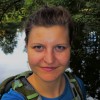Our senses are the oldest measuring tools used to judge what is good and what can be improved. In addition, we always have them with us. Consequently, Taste for Life have developed a new sensory science course for chefs and nutrition assistants.
The sensory science course proceeds over three days of teaching about taste and how our senses decode the experience of good food. The purpose is to move the methods of sensory science from the laboratory into the kitchen. The students are taught about the basic senses and the receptors transforming the chemistry and physics of the food to our experience of the food. Using examples from restaurants, the students make their own dishes to enhance their understanding of how the senses work together.
Measurement methods, vocabulary, and assessment of new dishes
The students are taught sensory measurement methods in order to understand which methods can be used for which purpose, not only when assessing if the ingredients are of good quality but also when developing a new menu.
Sensory scientists have developed precise vocabularies to describe all kinds of food and stimulants such as coffee, tea, wine, cheese, and honey. Some vocabularies are meant for a specific sense, for instance the sense of touch used to describe the mouth feeling.
When you have to make quick judgements of food that you have tasted several times before, you can use methods such as CATA in order to easily and quickly judge the taste.
In the end of the course, the students have to use their skills as craftsmen to develop new dishes based on principles of deliciousness. Additionally, they have to work with sensory methods, such as projective mapping, to develop new dishes. Projective mapping is especially suited when working with prototypes of new dishes or products, and when you only have a short period of time to judge the taste and quality.
On a sensory tour to the vocational schools
Associate professor Michael Bom Frøst from the Department of Food Science at University of Copenhagen is in charge of the new sensory science course. He gets help from Bat-El Menadeva-Karpantschof and Marie Damsbo-Svendsen. They have completed the sensory science course on several Danish vocational schools in cooperation with teachers from each school. The effect of the course on the students’ ability to describe their taste experiences is also being examined and evaluated.
Mentioned in the article
Associate Professor, PhD, University of Copenhagen.
Michael Bom Frøst is an associate professor in sensory science at the University of Copenhagen and the former director of Nordic Food Lab, a non-profit organization that investigates food diversity and deliciousness.
Foto: Robert Elkjær.
Bat-El Menadeva Karpantschof is a research assistant at Design and Consumer Behavior, Department of Food Science, University of Copenhagen. In Taste for Life, Bat-El develops course materials about taste and sensory science to chefs' and nutrition assistants' educations.
Bat-El was also coordinating MasseEksperimentet 2015, where up to 30.000 Danish children from 1350 school classes received aroma- and tastekits as part of a national experiment about childrens' taste preferences.



